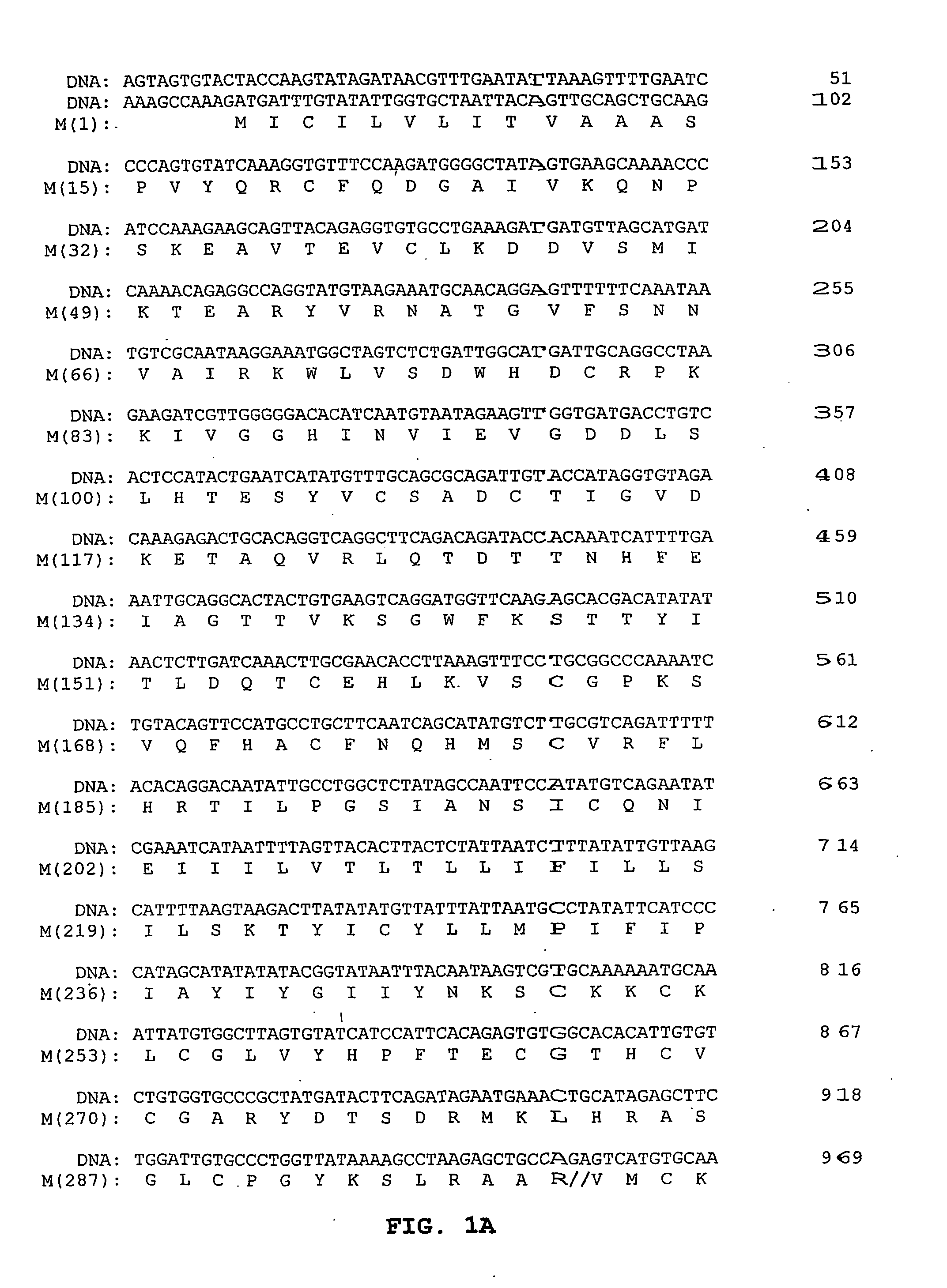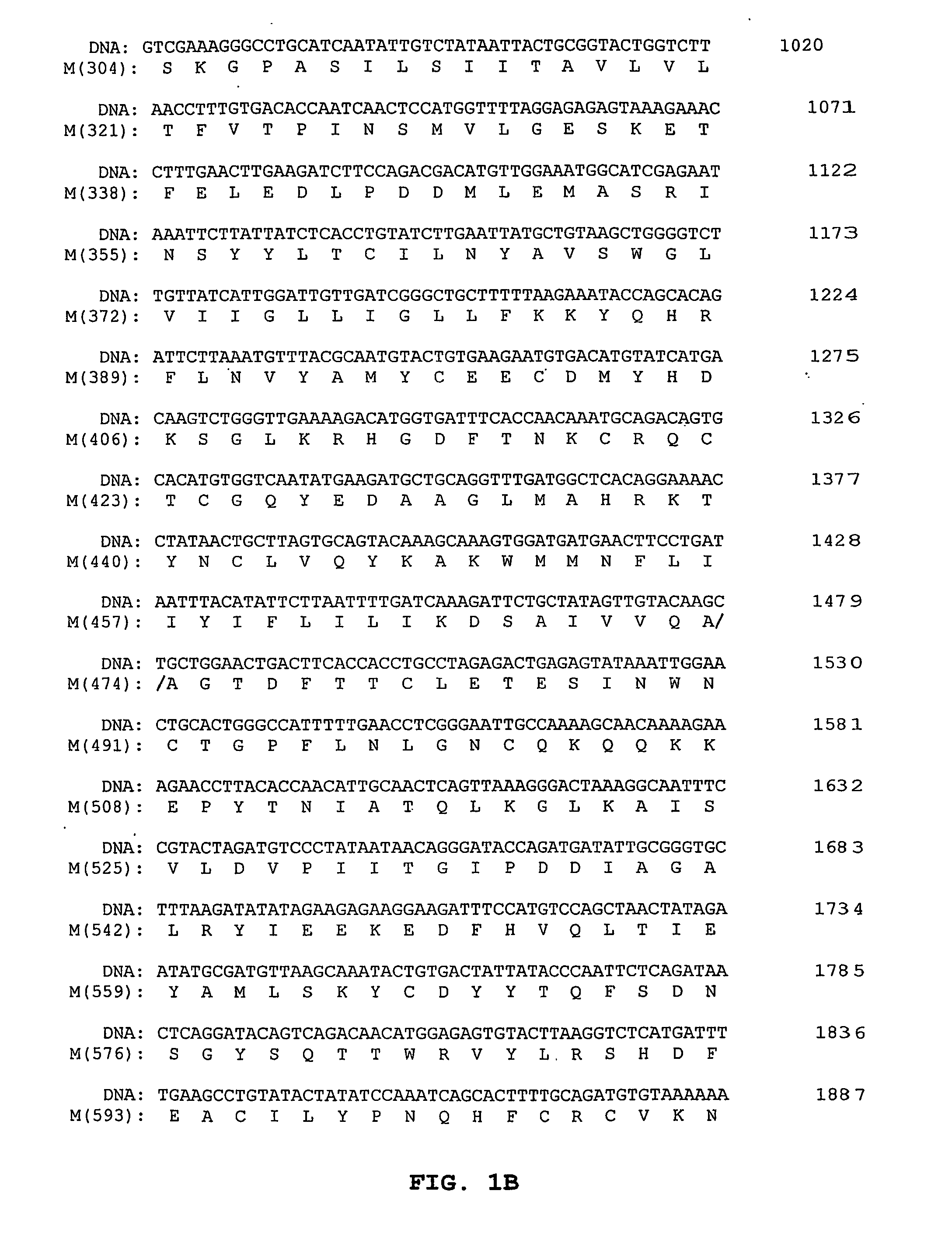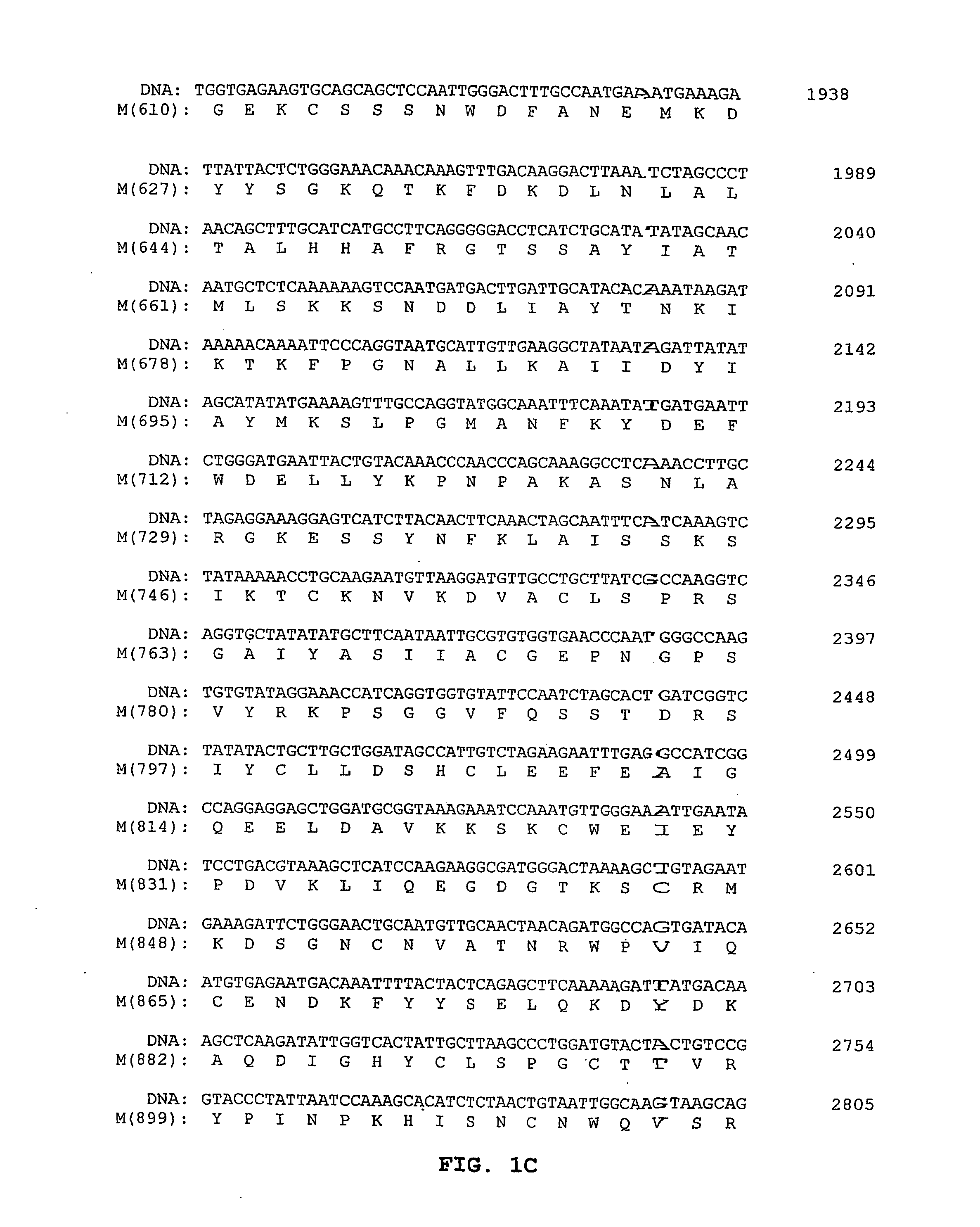Methods and reagents for treating, preventing and diagnosing bunyavirus infection
a technology of bunyavirus and reagents, applied in the field of viruses, can solve the problems of false positive determination, no effective prevention, treatment or diagnosis of cal virus infection,
- Summary
- Abstract
- Description
- Claims
- Application Information
AI Technical Summary
Benefits of technology
Problems solved by technology
Method used
Image
Examples
example 1
Cloning LACV M Segment Polypeptides
[0407]All numbering in the examples is based on the LACM sequence presented in FIGS. 1A-1E (NCBI Accession No. 004109). The full-length open reading frame (ORF) of the M segment of the La Crosse virus (nucleotides 62 to 4383 of FIGS. 1A-1E) was synthetically made using overlapping oligonucleotides. The Kozak sequence was introduced immediately downstream from the Xho1 site and upstream from the initiator methionine to facilitate expression in mammalian cells. LACM was then subcloned into pCMVIII (described U.S. Pat. No. 6,602,705, incorporated herein by reference in its entirety) by insertion into the Xho1 / Not1 sites to generate pCMVIII-LACM. Using LACM as a template, PCR was used to generate a truncated G1 (amino acids 474 to 1391) containing a C-terminal histidine tag (LACV-G1-1391his). The Kozak sequence followed by the kappa light chain leader sequence (Watson, M. Nuc. Acid Res. (1984)12:5145-5164) were introduced immediately upstream of amino ...
example 2
Expression of Envelope Glycoproteins
[0408]Expression of envelope glycoprotein G1 in COS7 cells was demonstrated by Western blot using commercial mouse monoclonal antibodies (mAb) that bind to G1 (Chemicon, Temecula, Calif., MAB8760; Virostat, Portland, Me., Cat. #3591) or human convalescent sera from an individual infected with LACV. (See Materials and Methods for details). COS7 cells were transiently transfected with either pCMVIII-LACM or pCMVIII-G1-1391his. Lysates from cells, which did or did not contain plasmids expressing LACV envelope proteins, were electrophoresed on a 4-20% polyacrylamide, 0.1% SDS gel and blotted onto a 0.2 mm nitrocellulose membrane. A protein of approximately 125 Kd was identified in the pCMVIII-LACM lysates and a protein of slightly smaller size, as expected for the truncated protein, was identified in pCMVIII-G1-1391his lysates, respectively. Proteins of approximately 120 and 125 Kd were not observed in the control cell lysate. The size of the G1 was c...
example 3
Purification of LACV Envelope Antigens
[0409]Large scale transient mammalian COS7 cell transfections were performed with the pCMVIII-LACM and pCMVIII-G1-1391his plasmid DNA as outlined in FIG. 8. Full length intracellular G1 and G2 (internal) was purified from cells expressing pCMVIII-LACM (amino acids 1-1441). Intracellular, truncated G1 was purified from cells expressing LACV-G1-1391his (G1-1391his internal, amino acids 474 to 1391). Secreted truncated G1 was purified from the media of COS7 cells transfected with pCMVIII-G1-1391his. LACM internal envelope glycoprotein(s) were extracted from cell pellets using Triton-X100, followed by ConA and SP column purification. G1-1391-his was purified both from cell pellets (internal form) and from cell culture media (secreted form). For secreted envelope, media was passed through a His trap column, followed by ConA and SP columns. For internal envelope G1-1391his, cell pellets were extracted by Triton X-100 followed by His trap column and SP...
PUM
| Property | Measurement | Unit |
|---|---|---|
| Fraction | aaaaa | aaaaa |
| Fraction | aaaaa | aaaaa |
| Fraction | aaaaa | aaaaa |
Abstract
Description
Claims
Application Information
 Login to View More
Login to View More - R&D
- Intellectual Property
- Life Sciences
- Materials
- Tech Scout
- Unparalleled Data Quality
- Higher Quality Content
- 60% Fewer Hallucinations
Browse by: Latest US Patents, China's latest patents, Technical Efficacy Thesaurus, Application Domain, Technology Topic, Popular Technical Reports.
© 2025 PatSnap. All rights reserved.Legal|Privacy policy|Modern Slavery Act Transparency Statement|Sitemap|About US| Contact US: help@patsnap.com



